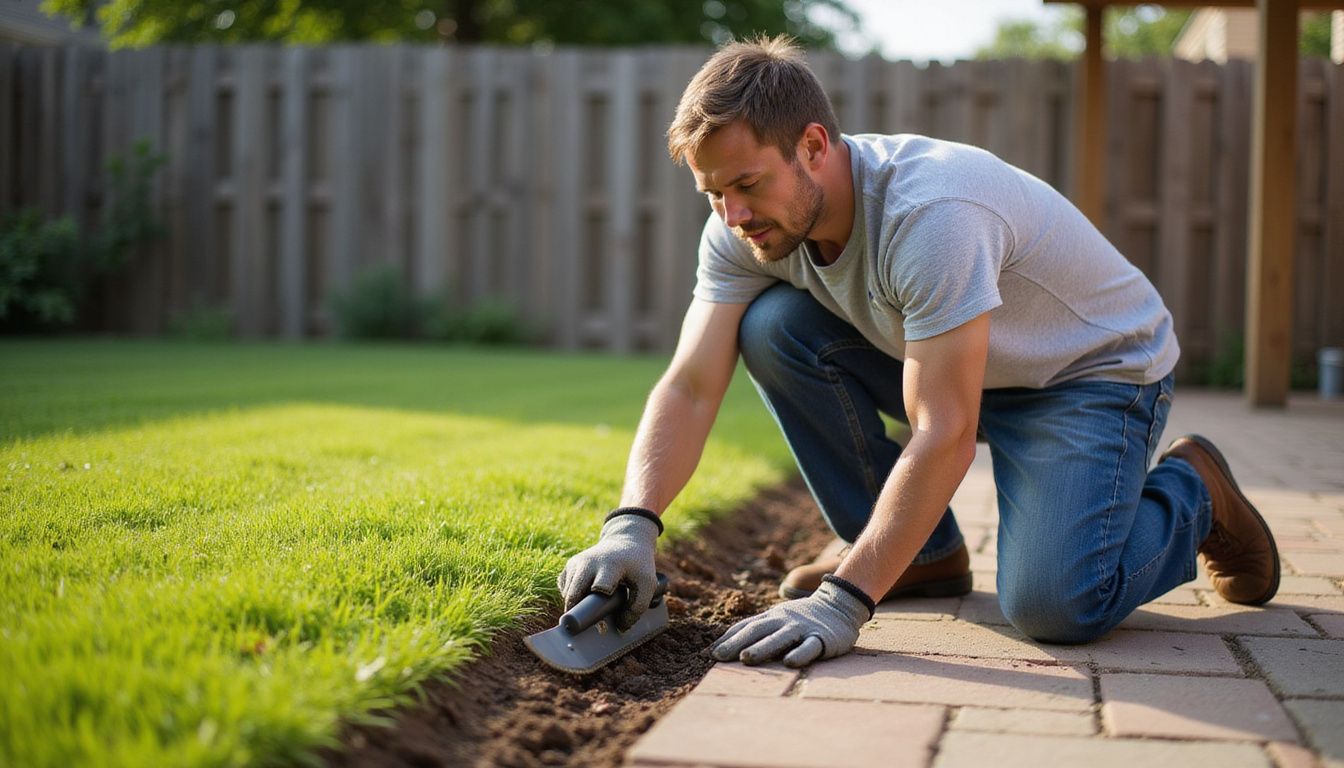Yes, you can change the coping on a pool. Pool coping—the material that edges the pool, separating the shell from the deck—plays an essential role in both functionality and aesthetics. Over time, coping can become worn, damaged, or outdated, and replacing it can refresh the look of your pool while improving safety. Whether you’re dealing with a concrete, fiberglass, or vinyl liner pool, changing the coping is a feasible option.
In this blog, we’ll discuss the reasons for replacing coping, the process, and the different materials available.
Why Should You Replace Pool Coping?
There are several reasons why you might want to replace the coping on your pool.
Wear and Damage
Pool coping is constantly exposed to harsh conditions that can cause it to deteriorate over time. Water, especially if it’s treated with pool chemicals like chlorine, can be quite corrosive. Weather conditions—such as intense sunlight, freezing temperatures, and heavy rains—also take a toll on the coping material. This can lead to cracks, chips, or discoloration, which not only detracts from the pool’s appearance but also affects its structural integrity.
Damaged coping can present real safety hazards. Cracks and chips in the coping create sharp edges that can cut or injure swimmers as they enter or exit the pool. Additionally, uneven coping can be a tripping hazard, increasing the risk of accidents around the pool deck. Once wear and damage begin to appear, it’s important to replace the coping before the issues worsen or cause harm.
Aesthetic Appeal
Pool coping plays a significant role in the overall look of your pool. Over time, styles can become outdated, and an old coping design can detract from the visual appeal of your backyard or outdoor space. If your pool area looks tired or dated, replacing the coping can immediately refresh its appearance, making it more modern and visually attractive.
The wide variety of coping materials and styles available allows you to customize the look of your pool to suit your personal taste and landscape design. You can opt for natural stone for a timeless, luxurious look, or concrete for a sleek, minimalist feel. Updating the coping also provides a great opportunity to coordinate with new decking or landscaping elements, creating a cohesive and aesthetically pleasing outdoor living space.
Safety
Coping isn’t just about aesthetics—it serves a functional purpose by providing a safe, smooth edge around the pool. Well-maintained coping prevents swimmers from slipping when entering or exiting the pool, and it provides a stable surface for walking along the pool’s edge.
If your coping is cracked or broken, the risk of injury significantly increases. Sharp edges can cut hands, feet, or even swimsuits, and swimmers may find it difficult to safely grip or sit on the edge of the pool. Replacing damaged coping ensures that the edges of the pool remain smooth and hazard-free, contributing to a safer swimming experience for all users.
How Is Pool Coping Replaced?
Replacing pool coping is a moderately involved process, typically done by professionals. Here’s an overview of the steps:
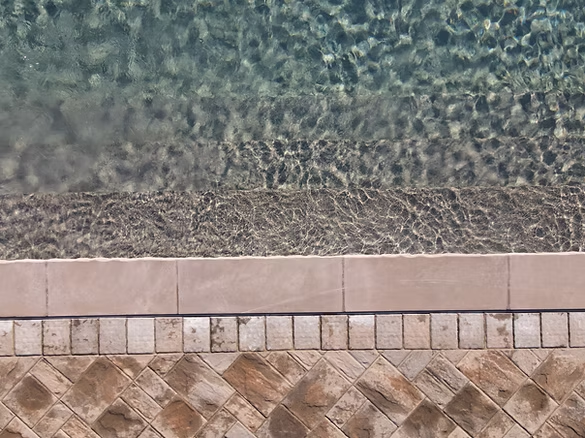
Remove the Old Coping
The first step in replacing pool coping is carefully removing the existing material. Depending on the type of coping (e.g., concrete, brick, stone), this process may involve cutting or chiseling away at the coping. Special care is taken to avoid damaging the underlying pool structure or the surrounding deck during removal.
For concrete coping, power tools like grinders or saws may be used to break it into manageable pieces for removal. If the coping is made from natural stone or brick, it may need to be pried up piece by piece. This step can be labor-intensive and time-consuming, but it’s crucial to ensure a clean slate for the new coping to be installed.
During removal, it’s also important to check for any underlying structural issues or damage to the pool shell, such as cracks or deteriorating mortar. Addressing these issues during the coping replacement process helps prevent further damage to the pool.
Prepare the Pool Edge
Once the old coping is fully removed, the pool edge must be thoroughly cleaned and prepped for the new coping material. Any remaining adhesive, mortar, or debris is cleared away to create a smooth surface for the new coping to adhere to.
If the removal process revealed any cracks, uneven areas, or structural damage, these issues are addressed at this stage. This may involve filling cracks, smoothing out rough edges, or leveling the surface to ensure the new coping will fit securely and evenly. In some cases, waterproofing the pool’s edge may also be necessary to protect the pool’s structural integrity and prevent water damage.
Install New Coping
Once the pool edge is prepped, it’s time to install the new coping. The installation process will vary depending on the type of coping material you’ve chosen, whether it’s poured concrete, natural stone, brick, or precast pavers.
Concrete Coping:
For poured concrete coping, forms are set up around the pool’s perimeter, and then the concrete is mixed and poured into the forms. Once set, the forms are removed, and the concrete is smoothed and finished for a clean, professional look.
Precast or Stone Coping
For precast coping, brick, or stone, each piece is laid in place and secured using mortar or strong adhesives. Proper spacing between pieces is maintained for uniformity and to allow for joint sealing. The alignment and levelness of the coping are checked throughout installation to ensure an even surface around the pool’s edge.
Sealing and Finishing
After the new coping is securely installed, the final step is sealing and finishing. This involves applying a high-quality sealant to the edges of the coping and filling in the joints between each piece. The purpose of sealing is twofold: it creates a watertight barrier to prevent water from seeping under the coping, and it helps protect the material from stains, chemicals, and weather damage.
For natural stone or concrete coping, a sealant is also applied to the surface to preserve the material’s appearance and prevent discoloration or erosion over time. The sealant also helps maintain the slip-resistant properties of the coping, which is essential for ensuring the safety of those walking around the pool.
Popular Pool Coping Materials
When choosing new coping, it’s essential to select a material that complements your pool’s design, meets your aesthetic preferences, and offers durability. Some of the most common options include:
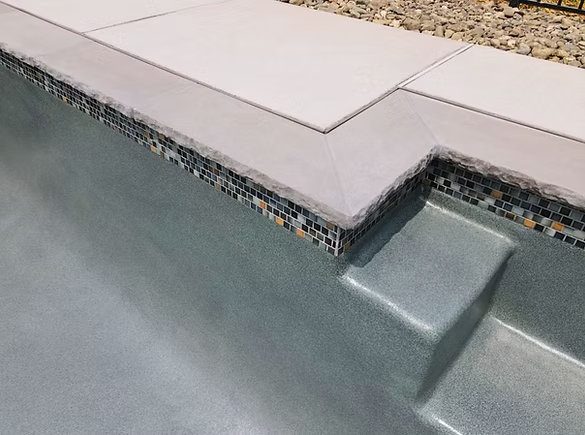
Precast Concrete Coping
Precast concrete is a popular choice for pool coping due to its durability, versatility, and affordability. This material can be poured directly on-site or precast into specific shapes and sizes to fit your pool’s design. Concrete coping can be molded to follow the curves of custom-shaped pools, making it ideal for non-standard layouts.
One of the significant advantages of concrete coping is its customizability. It can be textured for added slip resistance, which is essential for pool safety. Concrete can also be colored, stamped, or imprinted with designs that mimic other materials like natural stone or brick, providing a wide range of design possibilities at a lower cost.
Natural Stone
Natural stone, such as granite, travertine, limestone, or slate, is highly sought after for its beauty and timeless appeal. Stone coping offers a luxurious, elegant finish that instantly elevates the look of any pool area. The unique veining and textures found in natural stone give your pool a one-of-a-kind appearance, adding a sense of natural sophistication.
Stone coping is extremely durable, making it an excellent choice for high-traffic areas. It’s also naturally slip-resistant, offering both beauty and safety. However, natural stone requires regular maintenance, including sealing to protect it from staining, weathering, and chemical exposure.
Brick Coping
Brick coping is a traditional option that offers a timeless, classic look for your pool. Known for its rustic charm, brick is an excellent choice for homeowners who want to create a warm, inviting atmosphere around their pool. Brick coping is incredibly durable and stands up well to weather, water, and chemical exposure, making it a long-lasting solution.
Brick coping comes in various colors, from traditional red to more muted tones like gray or beige, allowing you to customize the look to match your pool and landscape design. Additionally, the rough texture of brick provides natural slip resistance, enhancing pool safety. traditional option that offers a timeless look. Brick coping is durable and provides a rustic, classic appearance for any pool.
Paver Coping
Pavers are a versatile and flexible option for pool coping. Available in a wide range of colors, shapes, and textures, paver coping allows for endless design possibilities. Whether you want a sleek modern look or a rustic, earthy feel, pavers can be arranged in patterns or layouts that suit your personal style.
One of the key advantages of paver coping is its affordability and ease of installation. If a paver becomes damaged, it can be individually replaced without the need to tear up large sections of the pool edge, making repairs straightforward and cost-effective.
Aluminum or Metal Coping
Aluminum and metal coping are often used in modern pool designs due to their sleek, contemporary appearance. Metal coping provides a clean, minimalist edge that complements modern architecture and landscaping. Aluminum, in particular, is lightweight, resistant to corrosion, and stands up well to chemical exposure, making it a durable choice for pool environments.
In addition to its aesthetic appeal, metal coping is low-maintenance and doesn’t require sealing or frequent upkeep like stone or brick. However, it can become hot in direct sunlight, so it’s important to consider the climate and how much direct sun exposure your pool receives when choosing metal coping.
When to Change Pool Coping?
The ideal time to replace pool coping is during a significant pool renovation, such as when you’re resurfacing the pool, installing new tile, or replacing the pool liner. Doing so allows for a seamless update of the pool’s overall look and ensures the coping integrates perfectly with other new materials. However, if the coping has become damaged, worn, or outdated, you don’t have to wait for a full renovation to address the issue.
Conclusion
Changing your pool’s coping is a vital part of pool maintenance and aesthetics. Whether your current coping is worn, damaged, or simply outdated, replacing it can enhance both the look and functionality of your pool. From durable precast concrete to luxurious natural stone, there are plenty of coping materials to choose from, allowing you to customize your pool area to match your personal taste and landscaping.
When selecting new coping, durability and safety are key factors, but it’s also an opportunity to refresh the overall design of your pool. If you’re looking for a reliable, elegant option, Kope by Vintage Cast is an excellent choice. This premium precast concrete pool coping product offers the perfect blend of durability and aesthetics. With its smooth, customizable design, Kope provides a beautiful, timeless finish that complements any pool style, while also delivering long-lasting performance that stands up to the elements.
Recent Posts
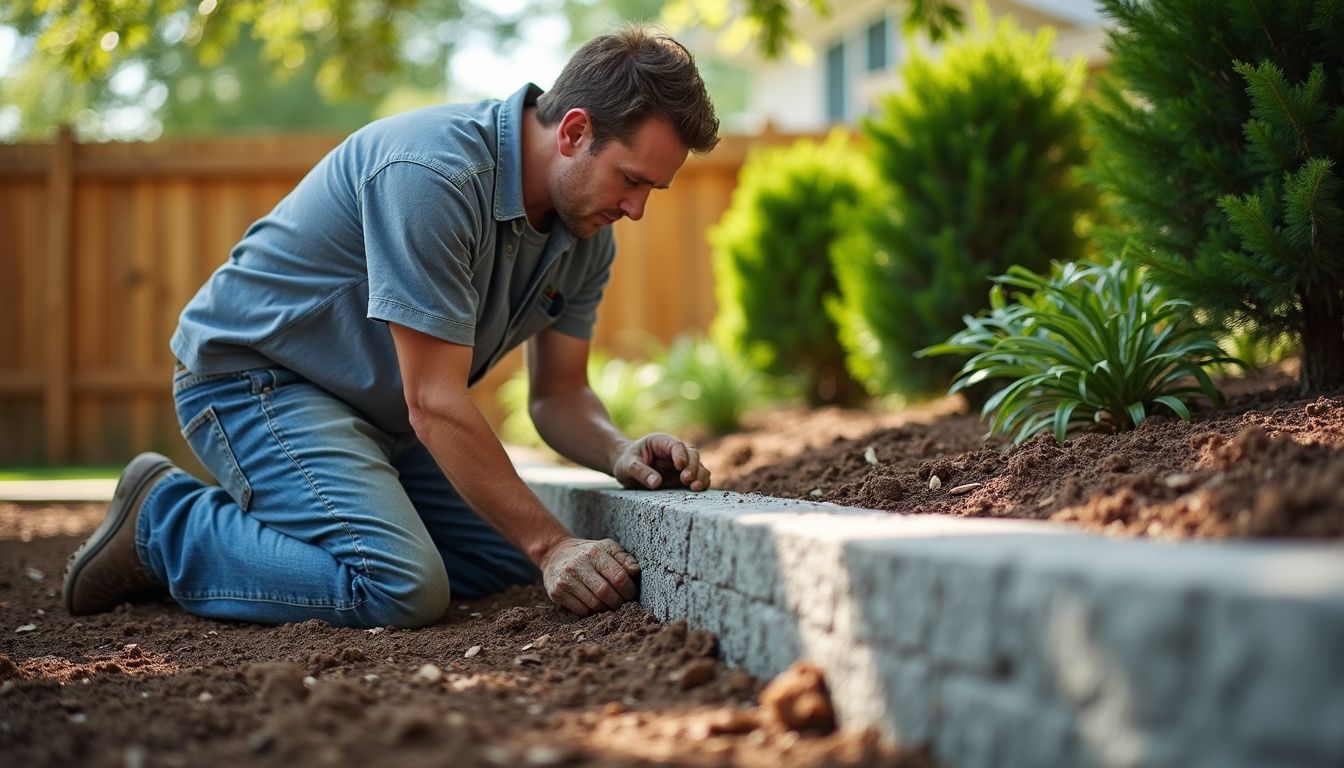
Why Landscaping Pros Prefer Precast Concrete Over Poured-in-Place
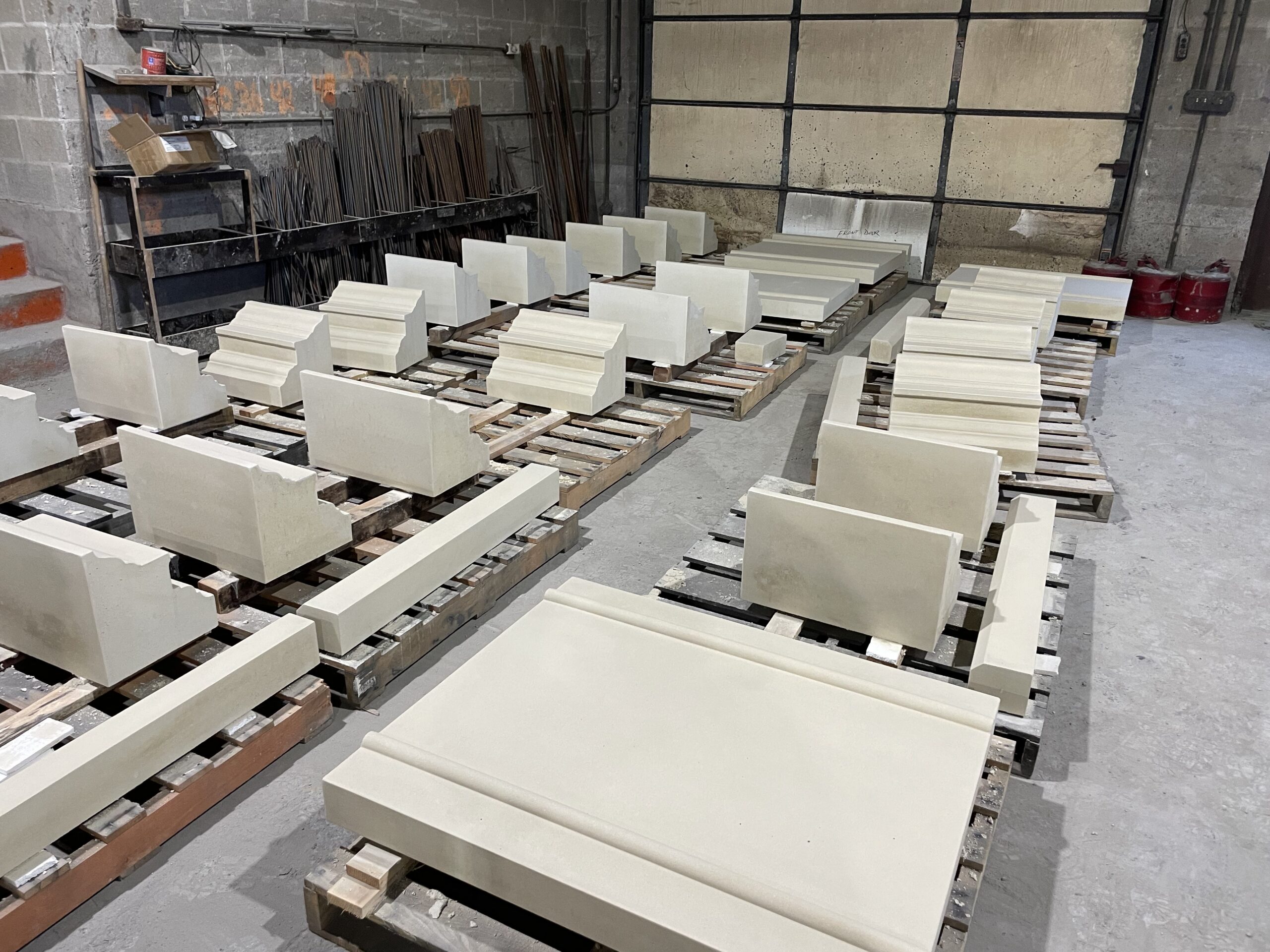
Why & How is Precast Concrete Prestressed?
